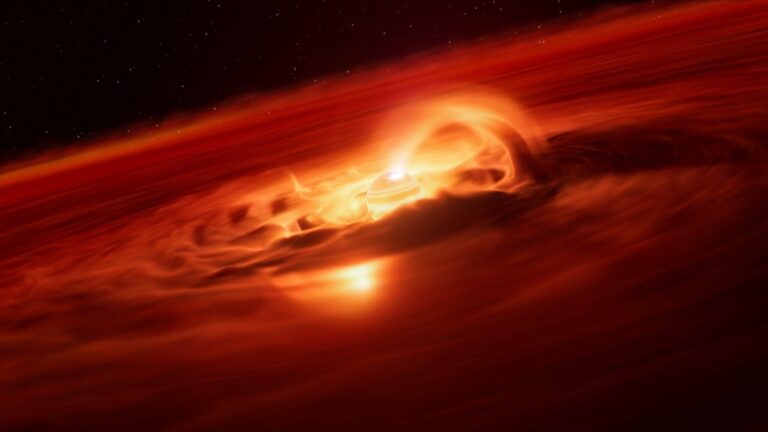The formation of planets is a fascinating process. They usually originate in a disc of dust and gas surrounding stars. When particles come together, they form a clump, and through a process called accretion, they interact with gaseous and dusty material around them until they take the shape of a planet. The process is slow, and it can take anywhere from thousands to millions of years before the formation is complete. But when it comes to rogue planets, which roam like vagabonds without a host star, the mystery deepens. How they form and at what stage they start wandering remains a mystery.
Adding to the enigma is the discovery of a new rogue planet in the early stages of its formation, which is consuming material at a much higher pace than scientists have ever recorded. Located some 620 light-years away in the Chamaeleon constellation, scientists recorded it accreting six to eight times faster than four months prior. The growth spurt recorded by scientists is quite ravenous as the planet is eating up to six billion tonnes of dust and gas every second.
“This is the strongest growth rate ever recorded for a rogue planet, or a planet of any kind,” according to a statement by the European Southern Observatory. Officially designated as Cha 1107-7626, this rogue planet is estimated to be five to 10 times heavier than Jupiter, the heaviest and largest planet in the Solar System. Interestingly, this rogue planet is not gobbling up surrounding material at a uniform pace.
This rogue planet is teaching scientists a lot
The most interesting aspect of this rogue planet’s accretion rate is the similarity with how young stars grow. The team behind the discovery notes that magnetic activity could be the reason why billions of tonnes of material are being ingested by Cha 1107-7626, a process that has mostly been associated with the formation of stars. It’s generally believed that gravity primarily dictates how material is deposited on a young planet’s surface as it grows in volume. Cha 1107-7626 opens the door to the possibility that it’s not just stars capable of using magnetic forces to pull in gas and dust during their accretion phase to grow in size, but also low-mass objects.
Another oddity is that the chemical composition of the accretion disc changes during the analysis phase, thanks to the appearance and disappearance of water vapor, another phenomenon that has only been witnessed during the formation of stars. “This discovery blurs the line between stars and planets and gives us a sneak peek into the earliest formation periods of rogue planets,” says Belinda Damian (via ESO), co-author of the research paper “Discovery of an Accretion Burst in a Free-Floating Planetary-Mass Object,” which documents the discovery.
Interestingly, NASA notes that our cosmic backyard might be home to more rogue planets, which is can track, than regular planets roaming in a stellar solar system. The agency’s David Bennett estimates that the Milky Way galaxy could be “home to 20 times more rogue planets than stars,” with potentially trillions of such wandering planets out there.
Images are for reference only.Images and contents gathered automatic from google or 3rd party sources.All rights on the images and contents are with their legal original owners.

